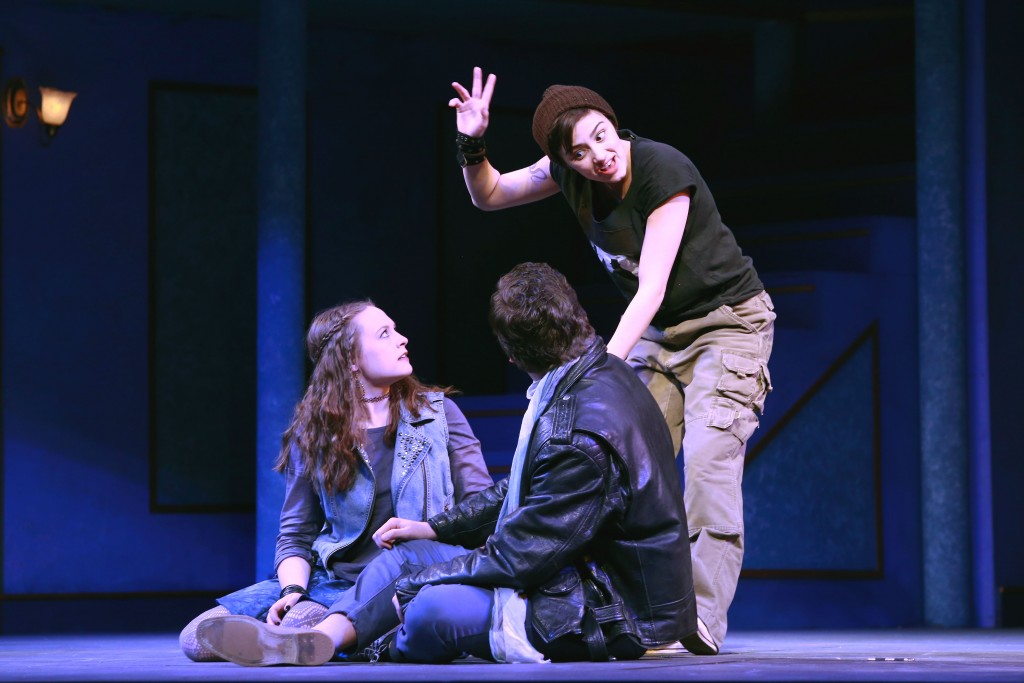
The Binghamton University theatre department ended its Mainstage season by going back to the basics, with a production of Shakespeare’s classic tragedy, “Hamlet.”
The play is one of theatre’s most revered pieces and is often required reading for those who study the English language. So, for an audience who will likely already be familiar with the story — the leading character’s angst, the familial betrayal and the eventual demise of each principal character — how can the show be made fresh?
In this production, directed by theatre professor Anne Brady, the first noticeable difference from other renditions is the show’s modern feel. Though the set and setting remain the antiquated castle of Elsinore, the play is launched into the 21st century through the props and costumes of the actors, which closely resemble the outfits and inventories of modern-day people. Gertrude and Claudius are dressed in contemporary clothing and the actors who play Horatio, Rosencrantz and Guildenstern are dressed in outfits typical of a student on the Spine.
There’s a great difference between just reading the text of “Hamlet” and this performance — the actors’ physicalities and line deliveries seem so effortless that it’s barely noticeable that the language is Elizabethan. Additionally, the show fills in moments absent in the original script — Brady has added small scenes, including silent, intimate asides between Hamlet and Ophelia, which occur within the background of scripted events.
However, there is another notable directorial addition: in this production, the traditionally male-cast Hamlet is played by Danielle Nigro, a junior majoring in theatre.
For Kevin Oakes, an associate director of the show and an adjunct professor of theatre at BU, the decision to cast Hamlet as a woman came naturally, given the creative team’s interpretation of the show.
“This is a story that we think is universal,” he said. “We wanted to open it up to all people auditioning — this is everyone’s story; this is a woman’s story just as much it is a man’s story.”
Brady echoed the sentiment, saying that the tragedies faced by Hamlet are ones experienced by both genders. She also believes that the narrative of the story has not been affected by the gender change in casting.
“Loss and heartbreak and despair and feeling at sea or alone or at a loss of what action to take are things that all of us can identify with at some point in our lives,” she wrote in an email. “And so, in those aspects, among others, Hamlet’s story is a universal story,”
Though masculinity is often associated with the role of Hamlet, Brady and Oakes explained that a female lead in the play is far from unusual. In fact, women have been playing the role since as early as the 18th century. And even beyond this, the minute that Nigro steps on stage, any preconceived notions of Hamlet’s character will evaporate. Her Hamlet is energetic, frenetic and as immaturely moody as a 30-year-old Danish heir can be, flawlessly moving between Shakespeare’s sharp wit and the madness of her character.
“A director considers many things when casting – she/he is casting a company of actors to tell a story, not just one person for one role. And, so, I cast the entire company to help support the story of the play ,” Brady wrote. “I hope that the audience may find something new in Hamlet by seeing it played with Danielle in the lead role.”
“Hamlet” will be playing at the Watters Theatre with performances at 8 p.m. on April 29, 30 and May 6 and at 2 p.m. on May 1 and 8.


